The Sandhill Cranes have returned to Homer, and a pair graced our property. A day after their return in late April, we watched them copulating in our neighbor’s yard. About two weeks ago, the male started coming to the yard alone, chasing off any other crane that even stops for a rest in our yard or the neighbor’s yard – so a good sign that they have established a nest nearby. We eagerly look forward to a Colt chick – about a 28 day incubation period.
So how do I know this is the male rather than the female crane? The male when he calls tilts his head back all the way perpendicular. The female only tilts her head at a 45 degree angle. I suspect in the next two weeks the egg(s) will hatch. We haven’t found the nest (and we haven’t looked for it), but suspect it is on the property of the landowner across the street from us. We should be seeing the colt (crane chicks are called colts) within the next two weeks or so. We suspect their parents will be bringing them to our property to hang out and eventually learn to fly. At least we hope they do.
Not only do we have cranes in the yard, but this surprise visitor stopped by the other day.
Luckily the dogs didn’t get too close, they were smarter than Jack who approached it to get a reaction. Other than displaying, the porky was undisturbed and commandeered its feeding ground. I would not want to try and remove quills from Jack or a dog’s face, nor have the porcupine injured. The porcupine has been hanging around for a few days and even hid out under our side deck.
SHOREBIRD MONITORING
I’ve been continuing to monitor migrating shorebirds at the Anchor Point Beach and River. We’ve had two monitoring sessions since my last post (16 May and 21 May). On 16 May, we had eight different species: Dunlins, Greater Yellowlegs, Western Sandpiper, Least Sandpiper, Semi-palmated Sandpipers, Black-bellied Plovers, Semi-palmated Plovers, and a dowitcher species – not sure which one.
On 21 May, we had nine different species: Long and Short-billed Dowitchers, Wandering Tattler, American and Pacific Golden-plovers, Spotted Sandpipers, Whimbrels, and Greater and Lesser Yellowlegs. We didn’t have a lot in terms of total numbers, just a good diversity of shorebirds. This wasn’t too bad considering the (human) crazies were out in full force – getting an early start on the Memorial Day weekend.
Beach Birding
On 17 May, Jack wanted to get some rocks for the yard so off again to the Anchor Point beach we went. While he was collecting rocks (not in the shorebird zone), I was searching for birds. Got lucky and had four Pacific Golden Plovers fly and land nearby. Also, the first of year Savannah Sparrow. Most people say “FOS” or first of season. I say “FOY” or first of year. What does first of season mean – what season are they referring too? Aren’t they really saying this is the first time I’ve seen the bird this year?
I took our dog “Honey” with us. She just loves the beach. Well she really isn’t “our” dog, but we’ve been watching her for friends and she feels like our dog. She was inspecting the ground for dog smells when this Northwestern Crow landed in a nearby tree and began to squawk, but not before dive bombing her. Honey, of course, was oblivious to the crow.
There were also a lot of Bald Eagles on the beach with the immature ones competing with the stately adult ones. Couldn’t pass up taking photographs of the eagles.
We went again to the Anchor Point beach on 22 May for more rocks. Jack likes to tell people one can never have too many rocks. I again birded the area. Was surprised to find that most of the birds from the previous night’s shorebird monitoring had left, as well as most of the ducks. Can’t say as I blame them with all the people around, let alone the eagles. The Harlequin Ducks are still hanging around on the ocean and in the river, but should be leaving soon to head to area streams to nest and raise their brood.
A small flock of American Pipits are still around. They must like the beach living or food source since it is unlikely they breed in the area. According to the Cornell Lab of Ornithology website “All About Birds” the American Pipit “Breeds in arctic and alpine tundra”. Not sure where this flock of pipits is headed.
I do love the Anchor Point beach for shorebird migration – both spring migration and what I call “outbound” migration, only because it begins as early as late June (non-breeders or failed breeders) – Summer – and lasts until October – Fall. In fact, I think outbound migration is better at the Anchor Point beach than is spring migration. Check it out. Each day brings surprises, including no shorebirds. Just watch out for the crazy beach drivers and the people launching the boats.
Remember – It’s A Great Day to Bird













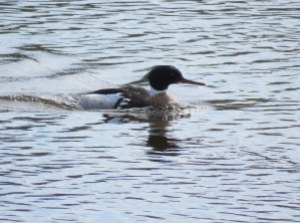
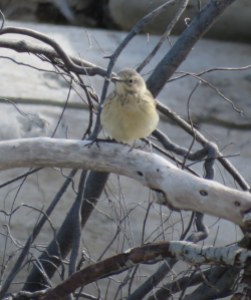
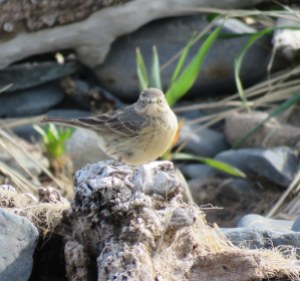
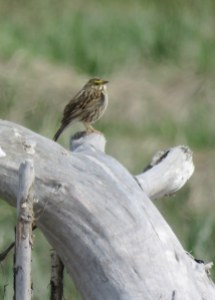


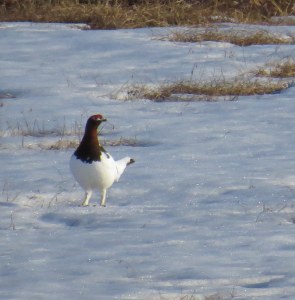


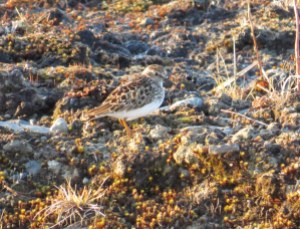






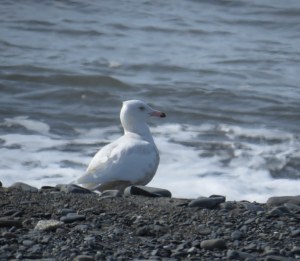








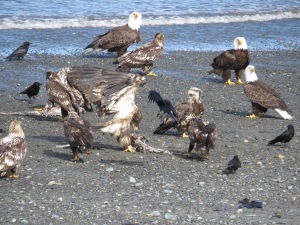
Recent Comments